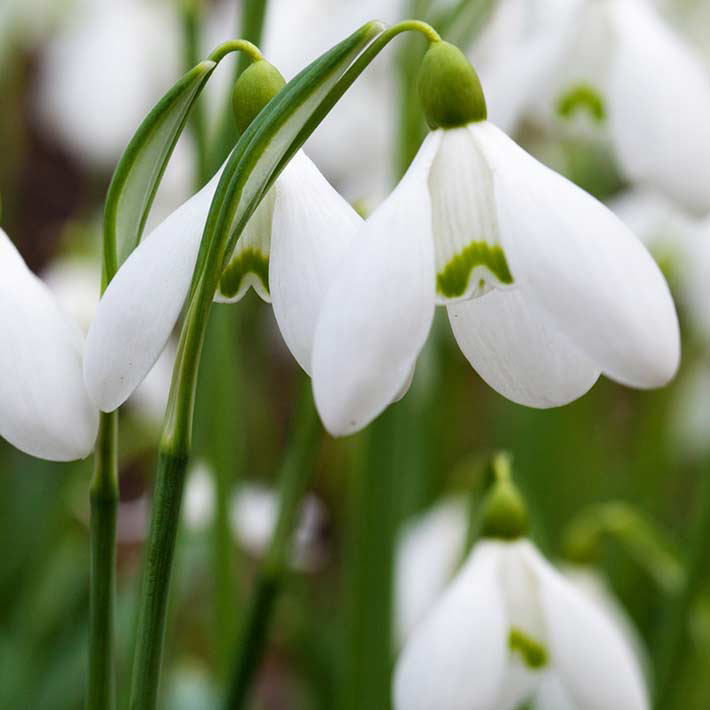
3 simple steps:
- Lift them – Snowdrops will spread to create a carpet across your garden. To encourage this, and keep them healthy and vigorous, divide clumps as the flowers fade.
- Divide them – Tease the clumps apart by hand, taking care not to tear the root structure. Once you have separated them into clusters of 3-5 bulbs, replant them.
- Replant them – Make fresh planting holes nearby, leaving space for the clumps to grow again (about 15cm apart). Improve the soil before planting with compost for best results.

Snowdrop Tips:
- Avoid planting snowdrops on its own, as they’re much better in small clumps. This will produce a better and more visual display.
- You will need to water and look after snowdrops after moving/planting them.
- To divide an existing clump, dig it up and split it. Put half back in the same hole, so there’s still a substantial clump. Then take the other half and split again. This is the best way to form big patches quickly.
- Avoid planting close to trees as Snowdrops do not do well in heavy shade. It is better to plant towards the edge of the tree canopy.

English, Spanish and Hybrid bluebells – How to spot the difference:
- What colours are the flowers? Native species’ flowers are a deep blue, whilst Spanish bluebells tend to have pale-blue/pink flowers.
- Do the flowers have any scent? The native bluebell has a strong sweet smell; Spanish ones are not scented.
- What shape are the flowers? Flowers of native bluebells are narrow and tubular, with the tips of the petals rolled back. Whereas the Spanish bluebells are more bell shaped.
- How are the flowers arranged? The native bluebell has flowers mostly on one side of the stem. Spanish bluebells tend to have them arranged around the whole stem.
- What colour is the pollen? Native bluebells have creamy white pollen, while Spanish bluebells have pale green/blue pollen.
- What shape are the leaves? The native bluebell has narrow leaves that are pointed at the tip; whereas Spanish ones have much broader leaves with a rounded tip.
- Hybrids are between the two, as they are very common and share the characteristics of both the native and Spanish plants.
